Key Obstacles in E-Commerce Logistics and Practical Solutions
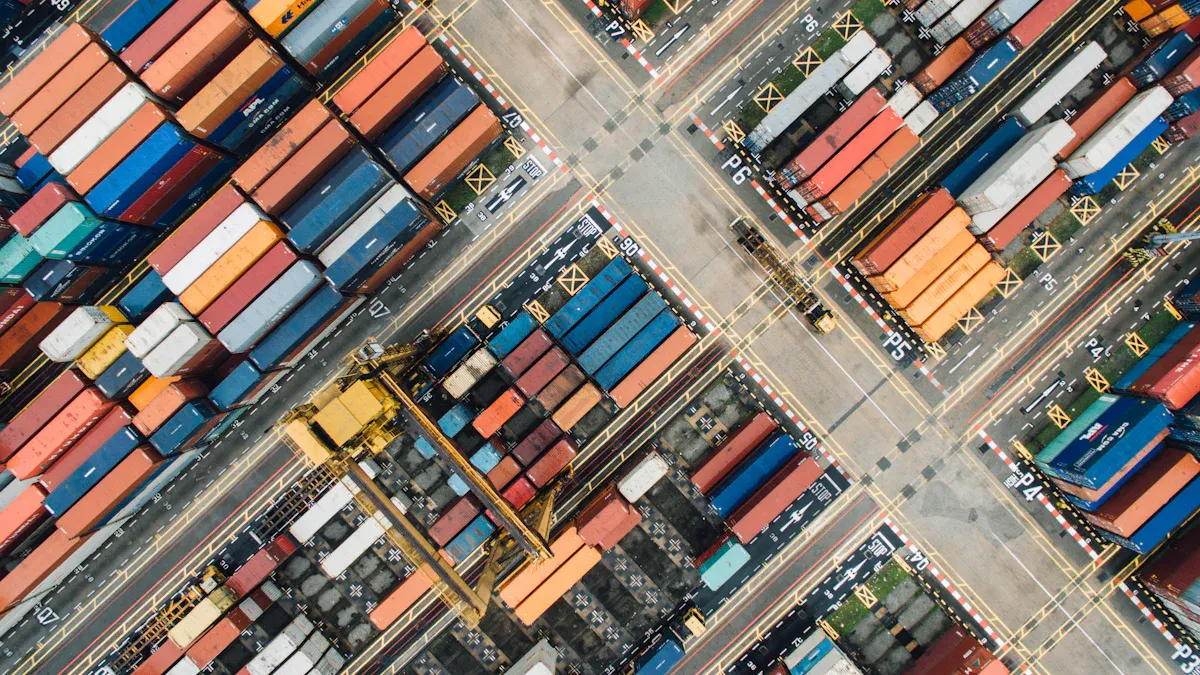
E-commerce logistics bring quick problems for global businesses.
Around 20% of online orders do not get delivered the first time.
Companies deal with busy seasons, not enough inventory, and too many shipping tasks at once.
Better inventory management and different ways to fulfill orders help fix these problems.
Better service in e-commerce logistics makes customers happier and helps businesses grow. Today’s e-commerce needs strong solutions to stay ahead of others in the market.
Key Takeaways
E-commerce logistics have many problems. These include late deliveries, inventory issues, and higher costs. These problems make customers unhappy and slow down business growth. - Using smart technology can help a lot. Real-time tracking lets companies see where packages are. Route optimization helps drivers find the best way to deliver. Automation makes work faster and easier. These tools help companies deliver quicker, manage inventory better, and spend less money. - Having clear returns processes is important. Good customs coordination helps packages move smoothly across borders. Training workers and building better infrastructure also help. These steps improve service and keep customers happy.
E-Commerce Logistics Challenges
E-commerce logistics have special problems for businesses. They want to give customers a smooth experience. Companies face delivery delays, inventory problems, and higher costs. They also need to meet what customers want. JUSDA uses its global skills and smart technology to help brands. It helps them solve these logistics problems and make their supply chain better.
Delivery Delays
Delivery delays are a big problem in e-commerce. Many things can make deliveries late. These include how well carriers do, hard delivery routes, and slow spots in the process. If there is no real-time tracking, companies may not see delays until customers complain. Data shows 72% of customer complaints on a big Chinese e-commerce site are about logistics. Delivery delays are the main reason. These delays make customers upset. They also make it less likely for customers to buy again. Fast and steady delivery is very important for happy customers and loyal buyers. Companies can use detailed tracking and smart data tools. These help them find where delays happen and fix order problems. Telling customers about delivery status builds trust and keeps them updated.
JUSDA solves these supply chain problems with real-time tracking and smart data tools on its JusLink platform. This lets businesses watch every step of delivery, check how they are doing, and fix problems fast. With JUSDA’s fulfillment services and global warehouses, brands can deliver faster and make their logistics more reliable.
Inventory Issues
Inventory management is another big problem in e-commerce logistics. Businesses have trouble guessing demand, dealing with busy seasons, running out of stock, and having too much stock. These problems cause lost sales, higher storage costs, and work slowdowns. For example, 43% of small businesses do not track inventory or use old systems. This makes them lose money. Bad inventory management can make companies lose up to 11% of yearly money because of stockouts and too much stock. Stockouts alone cause $1 trillion in lost sales each year. Too much stock makes storage costs go up by 20-30%. Also, 69% of online shoppers leave if items are out of stock. This shows how inventory problems hurt order fulfillment.
Note: Top e-commerce companies use smart inventory software. These tools have real-time tracking, demand guessing, and data tools to keep inventory right and save money.
JUSDA’s warehouse solutions and smart supply chain platforms like JusLink and eVMI give real-time inventory control. These tools help businesses manage inventory on many sales channels, lower stockouts, and make order fulfillment easier. By using JUSDA’s technology, companies can sell inventory faster, spend less, and make customers happier.
Rising Costs
Rising costs are a constant problem for e-commerce logistics. Many things make costs go up. These include more returns, faster delivery choices, higher worker pay, and bad infrastructure. In places like India, China, and Brazil, bad roads and lots of cash-on-delivery make logistics cost more. Last-mile delivery is hard, city traffic is bad, and fast shipping needs make costs higher. Most stores do not want to raise prices. Only 12% will charge more for fast delivery. This makes it hard to make a profit.
High return rates and fast delivery needs make fulfillment cost more.
Bad infrastructure and few deliveries in rural areas make last-mile delivery expensive.
Buying new tracking and route systems is needed but costs a lot.
It is hard to keep costs low and still meet what customers want.
JUSDA helps brands handle these logistics problems with cheaper fulfillment, better transport networks, and smart technology. By making supply chains work better and using global skills, JUSDA helps businesses control costs and keep service high in e-commerce logistics.
Last-Mile Delivery Solutions

Last-mile delivery is the most important part of e-commerce logistics. It decides if customers get their orders on time. This step can be more than half of all logistics costs. Companies must have good shipping plans to save money and give great service. JUSDA uses smart technology and a worldwide warehouse network. This helps brands deliver fast and keep logistics reliable.
Route Optimization
Route optimization lets companies deliver more packages faster. By picking the best routes, they drive less, use less fuel, and save time. For example, one big e-commerce company used route planning software. They made delivery times 20% shorter and used 30% less fuel. Dynamic routing helps drivers skip traffic and avoid delays. This means more packages arrive on time and fewer deliveries fail. JUSDA’s logistics platform uses smart data to plan better and work faster.
Measurable Outcome / KPI | Description / Impact |
|---|---|
Drivers finish more deliveries each shift with better routes. | |
Minimized travel distance/time | Less fuel is used and vehicles last longer. |
Customer Satisfaction Scores (CSAT) | Customers are happier because deliveries are on time. |
Cost per delivery | Costs go down with fewer failed deliveries and better planning. |
Real-Time Tracking
Real-time tracking lets companies and customers see every delivery. GPS, RFID, and IoT tools help teams watch packages as they move. This helps find delays fast and change routes if needed. About 91% of people track their packages, and 39% check every day. Real-time tracking makes customers less worried and builds trust. JUSDA’s shipping tools use these systems to keep customers updated and deliver faster.
Note: Using real-time tracking and route optimization together helps e-commerce brands grow, spend less, and give every customer a better experience.
Technology Integration
Technology is very important in e-commerce logistics today. Companies use automation and data visibility to make order fulfillment better. These tools also help customer service. JUSDA’s JusLink platform and warehouse management systems help brands do tasks automatically. They also let companies see real-time data in the supply chain.
Automation
Automation changes how logistics teams do their jobs. Companies use AI and robotics to make order processing faster. These tools also help reduce mistakes. Machine learning helps guess demand and plan delivery routes. Robots pick, pack, and sort items. This makes work more accurate and lowers labor costs. Automation in warehouses means orders get filled faster. It also means there are fewer errors.
AI and machine learning help manage inventory and plan delivery routes.
Automation helps save money and lets companies grow.
Real-time tracking and smart data help people make better choices.
Company / Technology | Quantitative Metrics | Impact on Warehouse Management |
|---|---|---|
Rocky Mountain ATV | 45% less manual labor, 99.97% shipping accuracy | Labor savings, higher accuracy |
Boux Avenue | 33% less temp labor, 5x faster order processing | Cost reduction, throughput increase |
AS/RS Systems | 50% more operations, 99.9% accuracy | Space and efficiency gains |
Data Visibility
Data visibility gives logistics teams more control and knowledge. Real-time tracking lets companies see every shipment and inventory level. Studies show 75% of companies with supply chain visibility have happier customers. About 62% spend less on logistics. JusLink brings all logistics data together. This makes it easy to find problems and fix them fast.
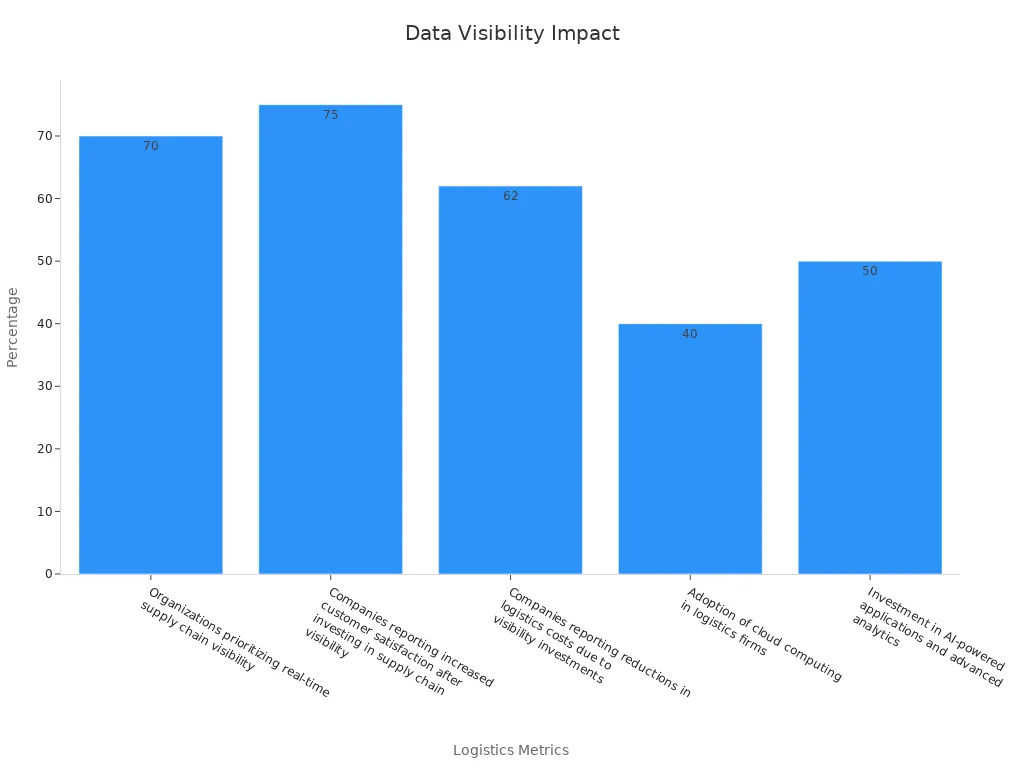
Companies that use real-time data deliver orders faster and share more information. This helps them work better and makes customers happier.
Returns Management
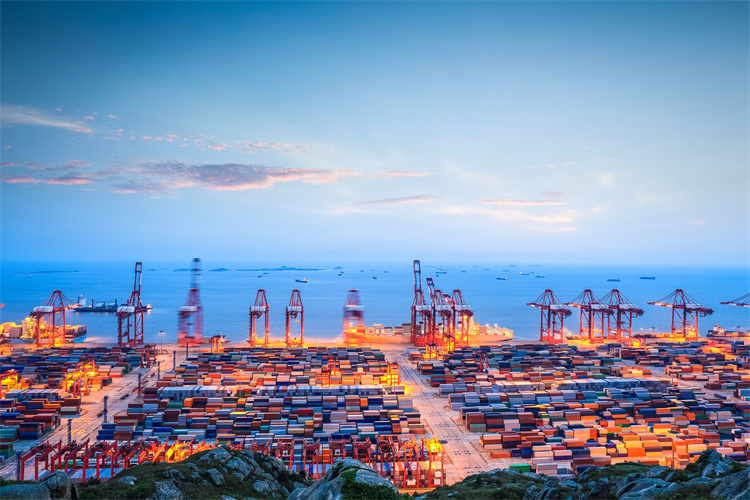
Streamlined Processes
Good returns management is very important in e-commerce logistics. Companies that make returns and exchanges easier save money and work faster. Automation and connected systems help workers do less by hand. This means fewer mistakes and faster returns. Businesses can control inventory better and restock items quickly. Products get back on shelves sooner.
Easier returns help companies spend less and restock faster.
Automation makes returns go quicker and lets staff do other jobs.
Connected systems follow returns, update inventory, and give refunds fast.
Return data helps companies see patterns and make products better.
Clear rules and good communication stop confusion and fraud.
Many e-commerce brands use technology to handle returns and exchanges. This makes returns faster and customers happier. For example, using returns software and clear rules can lower return rates by 15-25%. This saves money and helps meet what customers want for easy returns.
Customer Experience
A simple and open returns process helps customers trust a store. Stores with good returns management often keep 20% more customers. Most shoppers like clear return rules, and 75% say being open is important when picking where to shop.
Real-time tracking and updates help customers worry less.
Fast store credit for exchanges makes shoppers want to come back.
Automated systems make returns and exchanges simple, so customers are happier.
Companies that study return data can change their rules and help customers better. This makes relationships stronger and turns returns into a good thing.
International Logistics Solutions
Cross-Border Challenges
International e-commerce has special problems for shipping. Retailers pay more to send packages to other countries. Some shoppers do not trust foreign stores. They also worry about extra fees. Many small packages make it hard to follow all the rules. Bad data can slow customs and let fake goods get through.
Shoppers may not trust stores from other countries.
It is hard to follow customs rules.
Aspect | Statistical Trend / Challenge |
|---|---|
Customs Regulations | Complicated and changing rules slow things down and cost more. |
Delivery Costs & Last-Mile | Long trips and bad roads make last-mile delivery cost a lot. |
Standard delivery is used most because it is cheap and reliable. | |
Transportation Mode (2025) | Sea shipping is used most, but air shipping is getting more popular. |
Regional Market Share (2024) | Asia-Pacific has the biggest share, and China’s market is growing fast. |
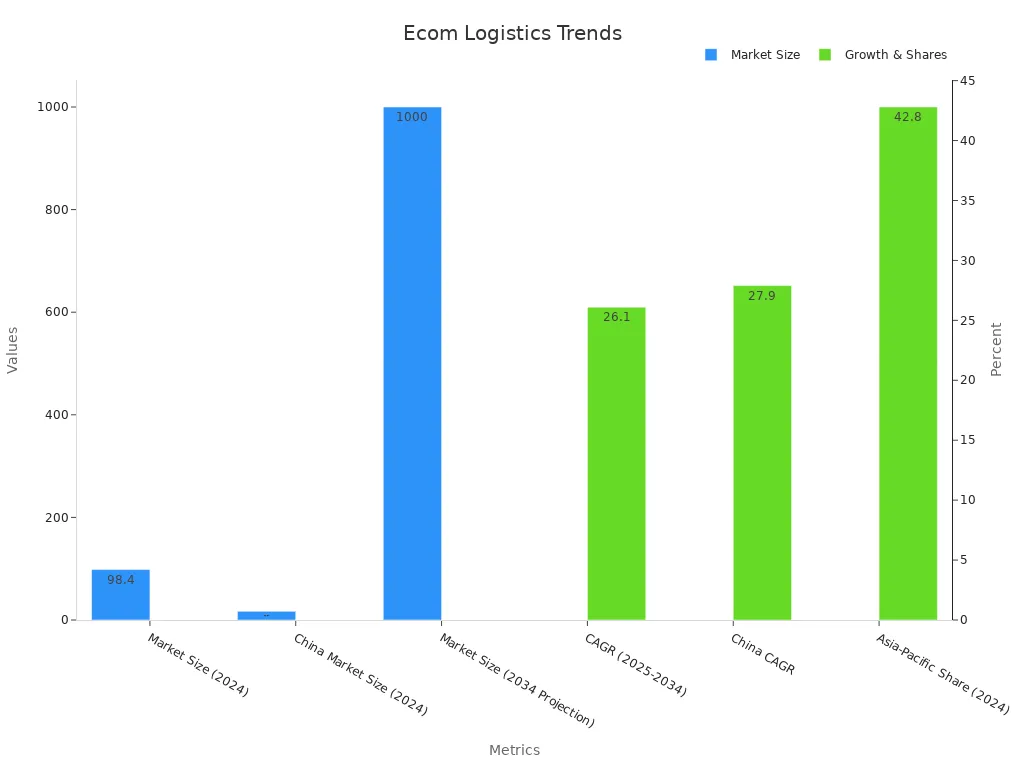
JUSDA uses its worldwide warehouses and JusLink platform to help. Local centers and real-time data make shipping faster and cheaper. The platform also helps shoppers trust the process by showing what is happening.
Customs Coordination
Customs clearance is a very important part of global shipping. Many countries have rules that are hard to follow. This can slow down packages. Digital platforms like JusLink help companies send the right data to customs. This means fewer mistakes and faster checks. In places like Europe and North America, good customs systems help trade move faster. They also help companies manage risks and keep customers happy. For example, after Barbados used a digital customs system, 60% of import payments finished in one day.
JUSDA’s digital tools link warehouses, carriers, and customs offices. This teamwork stops delays and keeps packages moving across borders. Companies using these tools can deliver faster and make customers happier.
Workforce and Infrastructure
Labor Shortages
Labor shortages make big problems for e-commerce companies. It is hard for them to find and keep enough workers. Many drivers and dock workers leave their jobs early. This means there are fewer people to hire. Companies have to pay more and sometimes use outside help. Logistics teams have trouble running things smoothly. When there are not enough workers, deliveries take longer. Customers are not as happy.
Teaching logistics workers new skills helps fill open jobs.
Training in digital tools and supply chain work makes things run better.
Working with schools helps companies find new workers.
Good pay and chances to move up help keep workers.
Metric | 2020 Value | 2021 Value | Impact/Note |
|---|---|---|---|
Reduction in HGV drivers | N/A | Fewer drivers mean less delivery capacity | |
Unfilled positions in UK | N/A | 1 million | Many vacancies add to logistics issues |
Customers expecting same-day delivery | 1.10% | 7.4% | Demand for faster delivery rises |
Delivery costs | N/A | Increased | Retailers pay more as worker numbers drop |
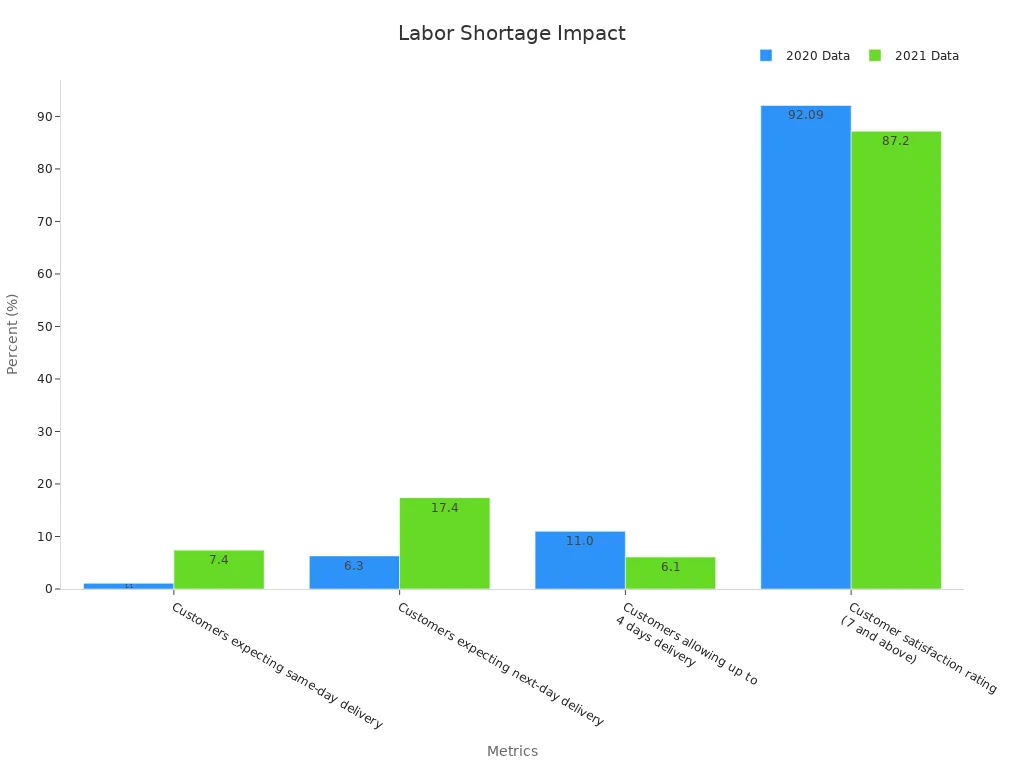
Clear steps, good training, and talking often help teams do better and fix logistics problems.
Infrastructure Upgrades
Good infrastructure is needed for strong logistics. E-commerce is growing fast and puts stress on warehouses and trucks. Old systems slow things down and cost more money. Companies spend money on new centers, electric trucks, and machines to keep up.
Statistic / Insight | Value / Description |
|---|---|
Market Size (2024) | |
Inventory Distortion Cost (Global) | $1.1 trillion lost each year |
Warehouse Automation Impact | 20% more throughput, 15% lower costs |
Transportation Costs Since 2020 | 23% higher |
Consumer Delivery Expectations | More want same-day or next-day delivery |
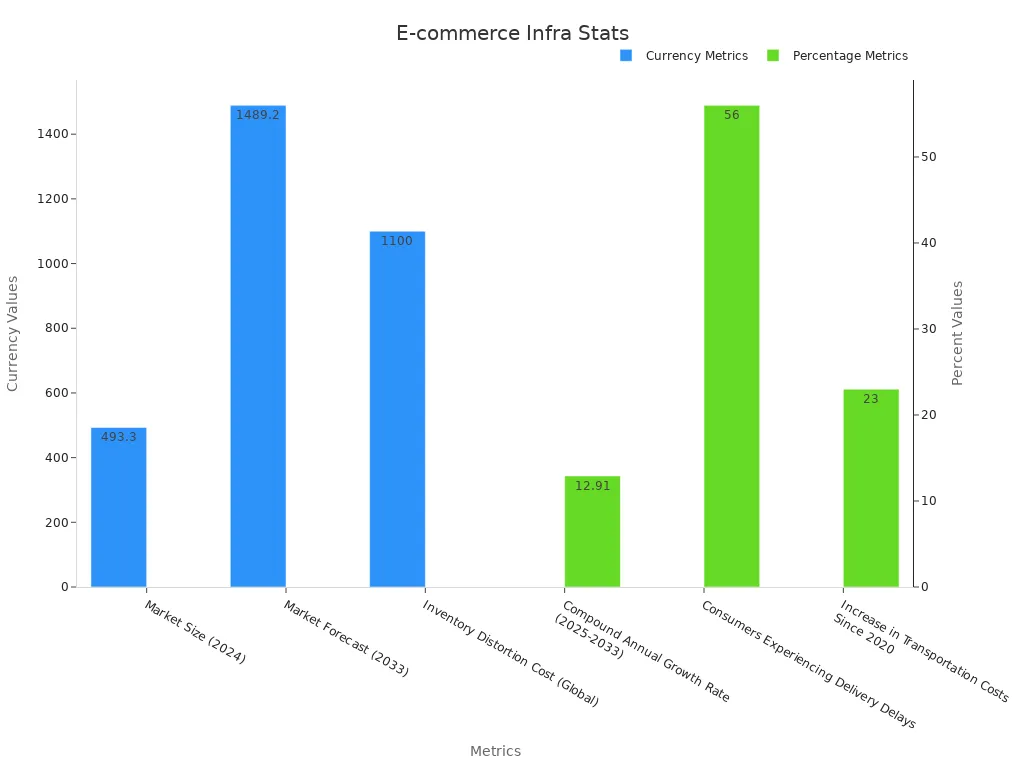
Modern logistics use AI, robots, and real-time tracking. These changes help companies meet what customers want and fix problems faster.
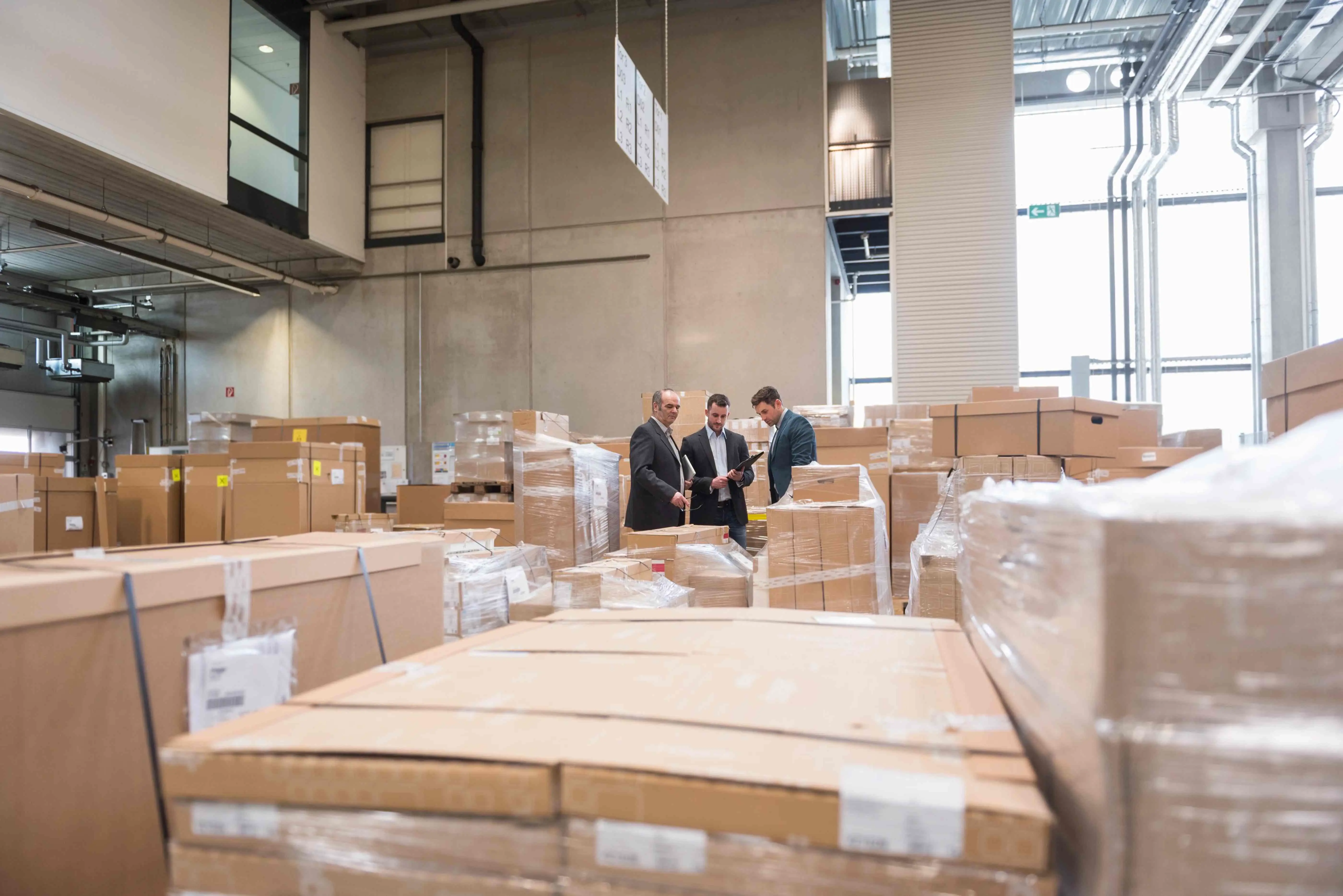
JUSDA Solutions
To provide you with professional solutions and quotations.
Taking action early in e-commerce logistics helps businesses grow. Companies using new e-commerce strategies deliver orders faster. They also control inventory better and make customers happier.
Advanced technology makes orders faster and more correct.
Real-time data lets teams react fast to changes.
JUSDA’s solutions help every e-commerce brand get these benefits.
See Also
Revealing New Approaches To Supplier Partnerships In Global E-commerce
Expert Advice For Overcoming Obstacles In Automotive Supply Chains
How Supply Chain Transparency Drives Success In Worldwide E-commerce
Optimizing Supply Chains Through Effective Risk Management Strategies
Proven Techniques For Excelling At Risk Management In Supply Chains
